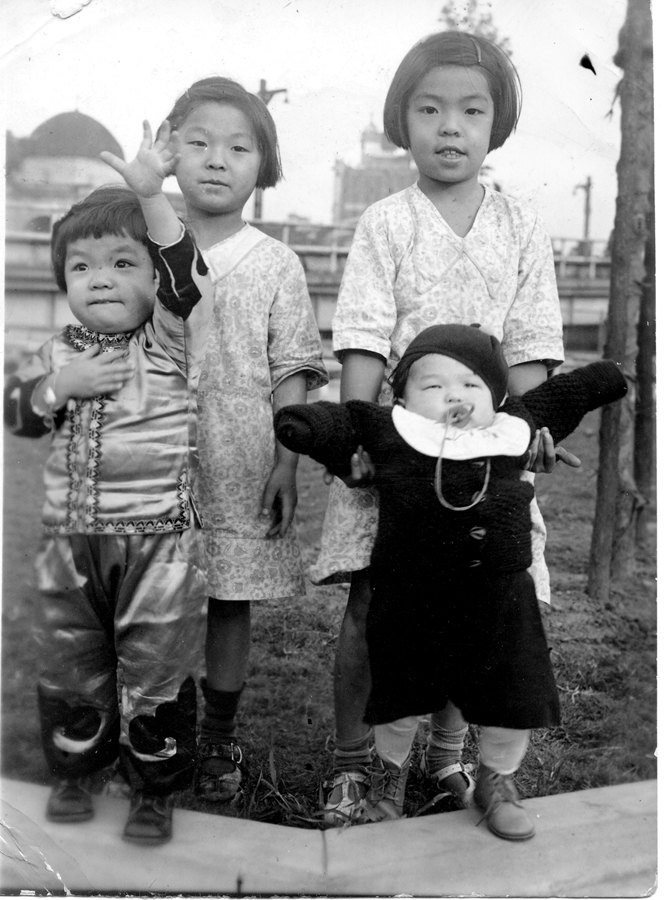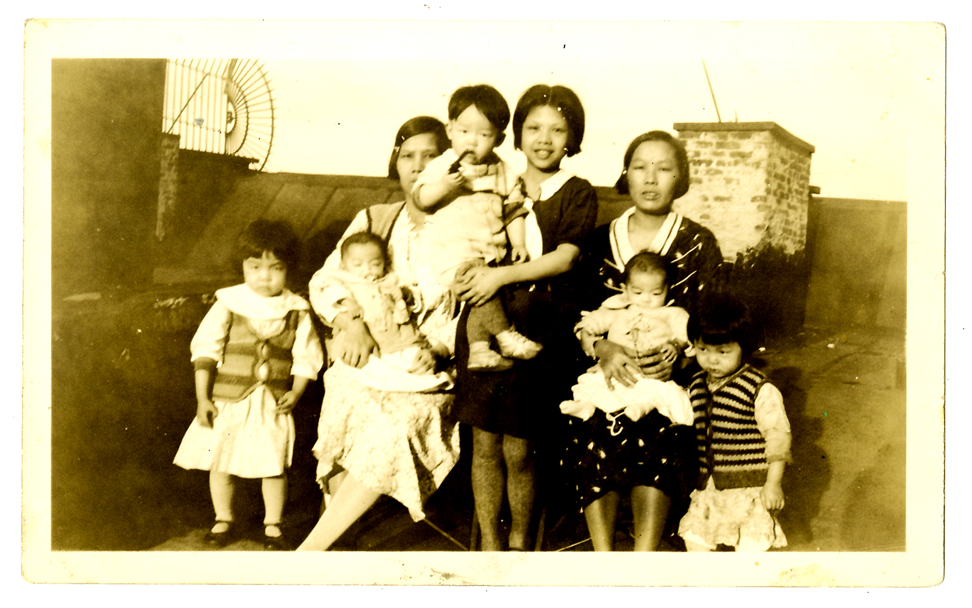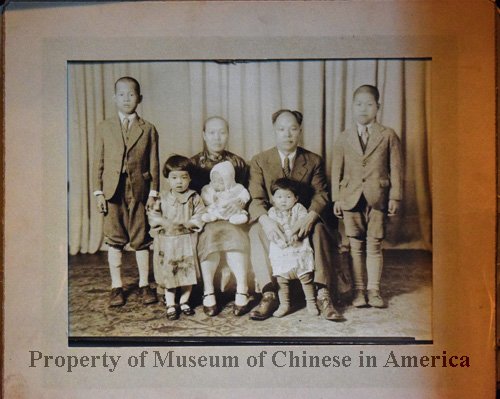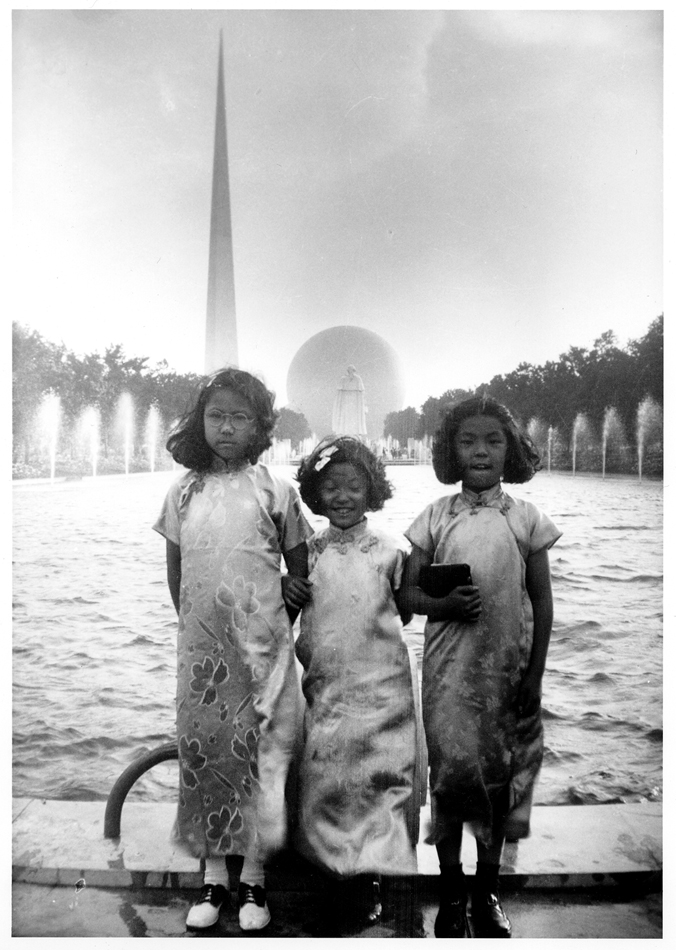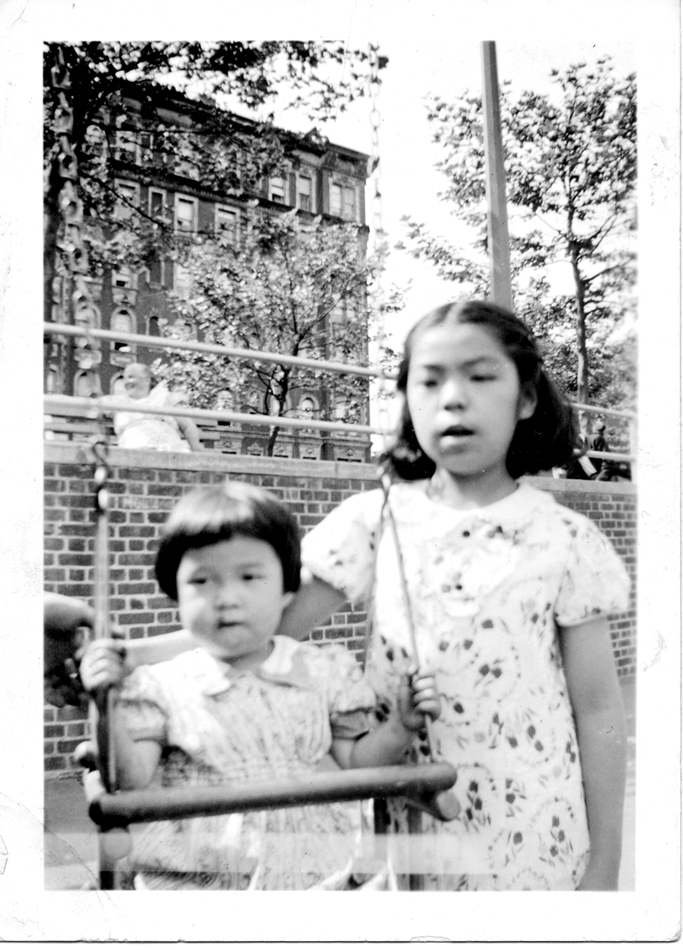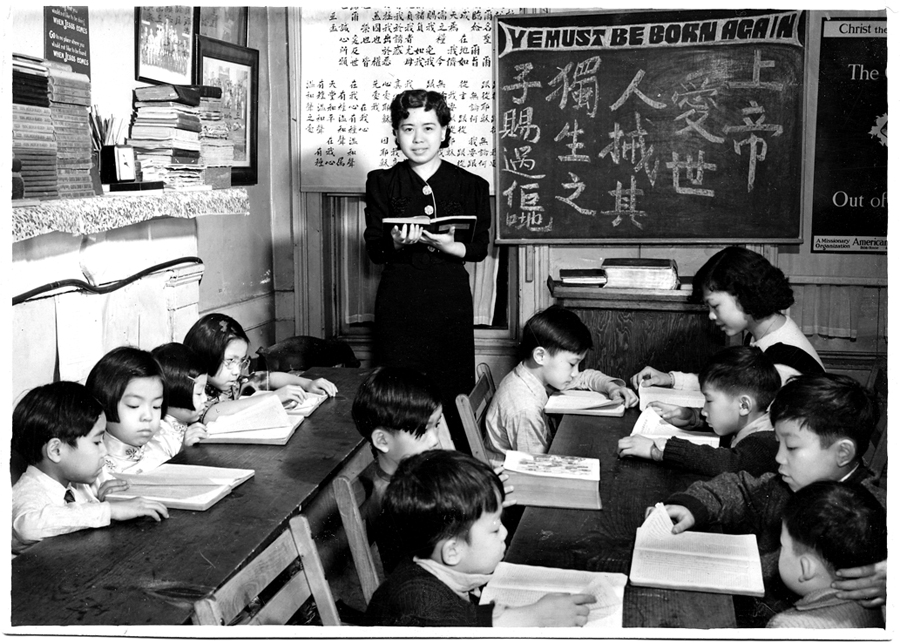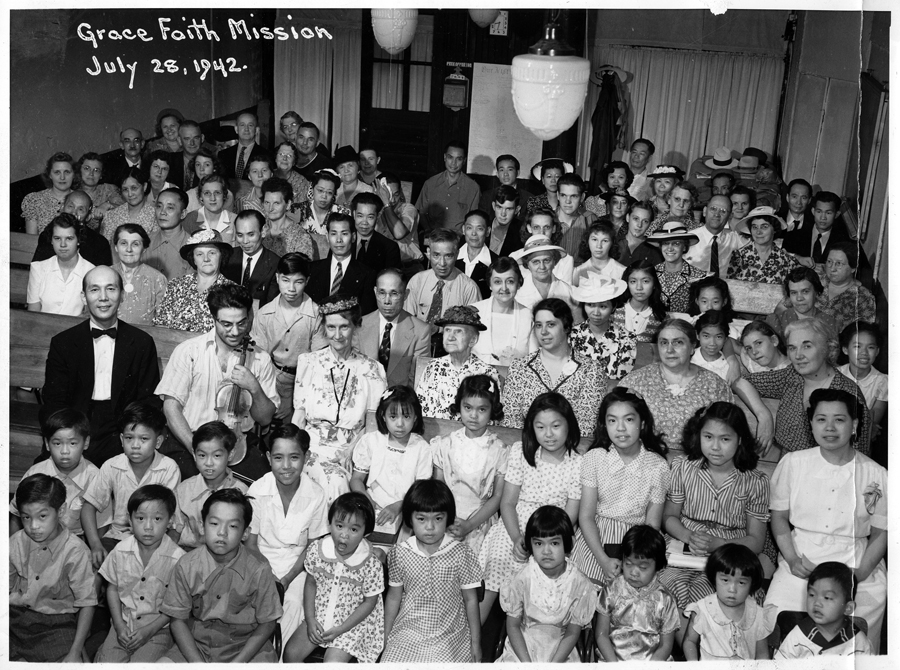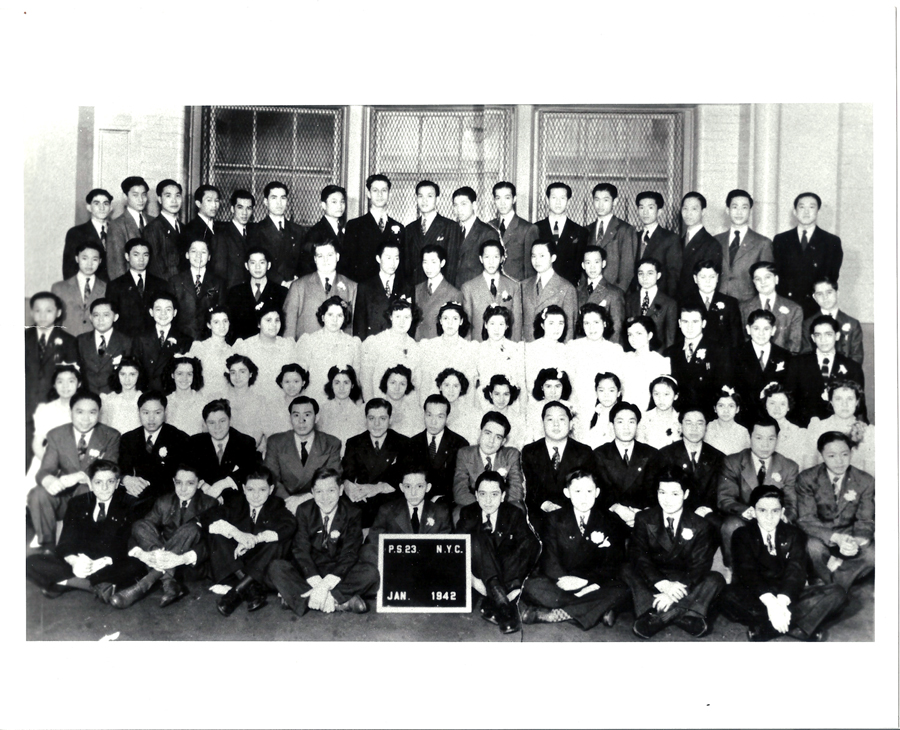The Lui children numbered eight, and during the 1930s, theirs was one of the largest and few Chinese families living in the still largely bachelor society of New York Chinatown. Their father, surnamed Wan, bought the papers of Lun Yuk Lui, a fellow villager from Hoksan (one of the five counties in the Pearl River Delta), and immigrated to the United States in the late 1920s with his wife and two sons of the man whose papers he had purchased. Wan’s young and growing family eventually settled into a tenement apartment at 63 Chrystie Street, then considered the neighborhood’s periphery.
The Lui children rarely saw their father, who routinely worked 18 hours a day at a grocery store and restaurant to support the large family. As was typical in Chinese families, the older kids became responsible for their younger siblings. Younger brother, Harold, remembers eldest sister Fannie giving her little brothers and sisters their first allowance of 5 cents when she got her first job, enabling them to buy candy.
Though their parents were busy and money was surely tight in Depression-era Chinatown, the Luis—Fannie, Edward, Ronald, Effie, Ralph, Anna, Alice, and Harold—remember always understanding what it was to be part of a community. Chinese fictive “uncles” helped keep an eye on them if they were playing outside their stores and volunteered to take them to Coney Island, Chinese movies, and other fun outings throughout the city on their days off.
The Lui children were also founding members of the Grace Faith Mission. Of Chinatown’s three churches, it was unique in serving an English-speaking congregation. Pastor John Lee Young, who started the church in his apartment in 1934, lived right next door, and the Lui children would go to attend Sunday school and Chinese school. Like other Chinese ministers in those days, Rev. Young served almost as a social worker. He performed translation work for Chinese-speaking bachelors, visited Chinese in jail, took sick children to the doctor, and introduced the Lui children to church services of diverse communities across the city, including congregations in the Bronx and Harlem. The selected family photographs document some of these rich childhood memories.
To learn more about the Lui family during World War II and beyond, listen to their MOCA oral history: http://ohms.mocanyc.org/viewer/viewer.php?cachefile=2016_033_004_1593056370.xml
